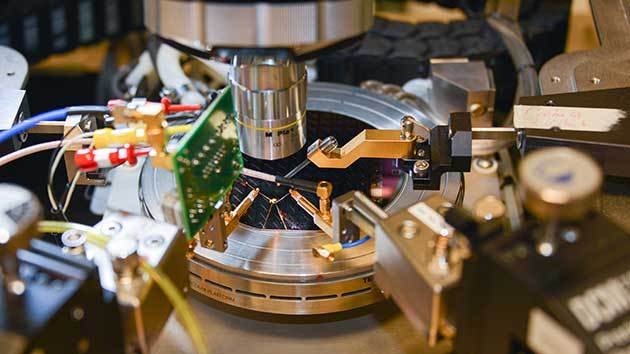The Machine. New HP Computer Architecture

Memristor Experiment at HP
HP expects to make a real revolution in the information technology market. The project called The Machine is an attempt to develop a new computer architecture, with a new operating system and a new type of RAM on memristors, which are free from the limitations of modern DRAM and flash memory and imply ultra-high data transfer rates.
75% of HP Labs staff is working on an ambitious project, BusinessWeek writes .
The company claims to bring new technology to the market over the next few years. HP's reputation is at stake, too many resources invested in this project. “It seems to us that we have no choice,” says Martin Fink, technology director at HP Labs, who announced HP's ambitious plans at yesterday’s conference.
')
A few decades ago, the development of a new computer architecture from scratch was not something special. This involved Intel, IBM and the same Hewlett-Packard. The development of each such project opened up a potentially new market, and the developers were skimming off. Now HP Labs wants to repeat the same thing.
The Machine project began two years ago when Fink was appointed to the position of Technology Director at HP Labs. The architecture involves the use of memristors as cells of RAM. The memristor is a passive element in microelectronics that can change its resistance depending on the charge flowing through it (in its current form it is made of tantalum oxide). Theoretically, it can replace transistors in microelectronics, it should be more capacious and fast than modern flash memory and DRAM. The memristor "remembers" the passing charge, so it stores information even when the power is off. This will make the PC architecture more compact, abandoning the components that have become unnecessary. The information density of memory on memristors is so much higher than the existing technologies that, according to HP Labs estimates, the amount of data of a modern data center can be contained in several server racks!
In addition to the memristors, The Machine's project involves the use of a data bus operating on silicon photonics technology, that is, the signal is transmitted by a laser, and not through copper contacts.
Memristors are used both as RAM and as a data collector, which significantly increases the speed of data exchange with the CPU.
About the operating system Machine OS so far little is known. Only that it will be open source and should take maximum advantage of the new hardware. A separate development group at HP Labs is working on creating a Linux distribution for the same purpose, another group is creating an Android version.
The Machine project has no clear deadline: the developers say that the product can be released in 2017 and at the end of the decade.
In general, romantics who believe in revolution have not yet been transferred to the IT business. Looks like Martin Fink is one of them. At the same time, independent analysts look at HP experiment with great doubt, although they hope it will be a success.
HP Labs keynote presentation on memristors from 2010
Source: https://habr.com/ru/post/226073/
All Articles